Toyota Tacoma Vs Toyota 4Runner: Which Mid-Sizer is Right for You?
In the world of four-wheel-drive vehicles, the Toyota Tacoma and 4Runner are two of the most sought after.
The Tacoma has been the bestselling mid-size pickup since the segment has existed while the 4Runner is the most popular 4×4 (off-road) SUV to come from any non-American automaker.
While these two Toyota utility vehicles don’t compete with each other, they are both mid-sized vehicles that can haul, tow, and attack rough terrains. If you are shopping for a mid-sizer that will go anywhere in any weather condition and refuses to break down, there is a good chance that the Tacoma and 4Runner are on your shortlist. While their physical shape is the most obvious difference between the two, they each have some key advantages that might sway you to purchase one over the other. Don't forget also that the Tacoma is all-new while the 4Runner has been on sale in its current form for quite some time.
Below, we look at the key attributes, features, and specifications of the Toyota Tacoma and the Toyota 4Runner, highlight which leads in the most important areas.
Cabin Space
Interior space is where the Toyota Tacoma and Toyota 4Runner really stand apart from each other, with one being a pickup truck and the other being an SUV. Also, since the 4Runner is only available as a four-door model, it is unlikely that consumers would be cross-shopping it against the two-door Tacoma. With that in mind, all of the interior specifications for the truck below pertain to the four-door Double Cab models. For the two-door Access Cab, the front measurements are similar, but the rear seating space is considerably smaller than the Double Cab.
Tacoma: The front of the cabin is more spacious in the Tacoma. It offers 39.7 inches of headroom compared to 39.3 inches in the 4Runner. It also offers the slightest bit more hip-and legroom, 56.8 inches against 56.6 inches and 41.8 against 41.7 inches respectively.
4Runner: On the other hand, the 4Runner has a slight advantage in terms of rear headroom. It offers 38.6 inches of compared 38.4 inches in the Tacoma. But when it comes to hip and legroom, the Tacoma wins again. The 4Runner has 56.3 inches of hiproom compared to 56.8 inches in the Tacoma. Rear seat legroom for the Tacoma is measured at 33.7-inches compared to 32.9 inches in the 4Runner.
Although the third-row of seats in the 4Runner are pretty snug and since the Tacoma has no third row, the SUV gets the decisive advantage in terms of passenger capacity.
Bottom Line: If you need room for more than five passengers, the 4Runner is the obvious choice, but if you don’t regularly travel with more than four passengers, the Tacoma is the better choice.
Cargo and Towing
Tacoma: The Tacoma offers much greater hauling capacity since there is no roof to get in the way. If you are hauling a large television in the box, the odds are good that it will not fit in the rear cargo area of the 4Runner due to the roofline, but that same TV box will easily fit in the bed of the Tacoma, especially if you opt for the six-foot bed. You can also easily carry longer items, such as lumber, ladders or other things which won’t fit inside of an SUV.
The Tacoma is capable of towing up to 6,500 lb while the payload in the bed is anywhere from 1,230 pounds to 1,705 depending on trim and configuration.
4Runner: If you are hauling large cargo, the pickup is always the better choice, but if you are hauling smaller and more perishable items, the enclosed cabin of the 4Runner offers the advantage of security. Items in the rear-most area of the Toyota SUV are safe from both the elements and thieves, so the enclosed storage comes with some peace of mind.
You get 9 cu-ft of luggage capacity behind the third row which expands to 46.3 cu-ft with the third row down. Also, if you have a bunch of smaller cargo, perhaps when you are helping a friend move their smaller belongings to a new home, the second-row seats of the 4Runner fold flat to offer 89.7 cu-ft of cargo capacity.
All 4Runners are rated to tow up to 5,000 lbs.
Bottom Line: If you need the ability to haul large cargo, or tow a decent amount of weight, the Toyota Tacoma is the better of the two options. But if you want more secure cargo capacity, the 4Runner is the better choice.
Technology and Features
Tacoma: The Tacoma SR comes with cloth seats with the option for the front seats to be six-way manually adjustable. The SR5 and PreRunner come standard with these seats, but can be upgraded to 0-way power adjustable. The SR5 models also add a leather-trimmed steering wheel and heated front seats. The TRD Sport and TRD Off-Road models come with the same cloth seats but can be upgraded to SofTex seats that are heated and ventilated. They are also 8-way power adjustable for the driver and four way power adjustable for the passenger. The Tacoma Limited comes standard with these seats.
The Toyota Tacoma is offered with two different infotainment systems. Most models come with a 8-inch touchscreen standard, but can be upgraded to a massive 14-inch screen. All of the infotainment systems feature wireless Apple CarPlay and Android Auto capabilities. Depending on trim and option package, the Tacoma comes with a 4, 6, or 10 speaker audio system, the latter powered by a JBL.
The TRD PreRunner, TRD Sport, TRD Off-Road, and Limited all have a 12.3-inch digital gauge cluster as well.
4Runner: In SR5, Trail Special Edition, and TRD Off-Road trims, the 4Runner features cloth seats with an 8-way power-adjustable driver’s seat and a 4-way manually-adjustable front passenger seat, a 40/20/40 split second-row bench, and a 50/50 split bench in the third row. The second-and third-row seats all fold flat to create more cargo space. The SR5 Premium, TRD Off-Road Premium, and TRD Pro all come with the same style of seats but are wrapped in SofTex synthetic leather and the front seats of these premium models are also heated. In the 4Runner Limited and Nightshade models, the seats are wrapped in perforated leather and are both heated and cooled.
The Toyota 4Runner comes with the Entune infotainment system with an 8-inch touchscreen with Android Auto, Apple CarPlay, Amazon Alexa, SiriusXM radio, and Bluetooth connectivity. In the SR5 and Trail Edition models, the 8-inch screen is connected to eight speakers while the optional Premium Audio adds Dynamic Navigation and 11 speakers. The TRD Off-Road models come standard with the Audio Plus system, which is the same as the base audio system except with the addition of HD Radio, and Premium Audio with navigation is optional. In the TRD Off-Road Premium, SR5 Premium, and Venture Edition models, Premium Audio is standard while the Limited, Nightshade Edition, and TRD Pro come with the Premium Audio system paired with a 15-speaker JBL sound system.
Every new Toyota 4Runner comes with the Optitron instrumentation system, featuring an LED information screen that displays the odometer, trip meters, average fuel economy, ECO driving indicator, and warning messages. Other standard features of the 4Runner include a backup camera with a projected path, a leather-trimmed tilt/telescopic steering wheel with audio and Bluetooth controls, two 12-volt power outlets, four USB ports, and a 120-volt power outlet in the cargo area.
Bottom Line: In terms of infotainment, the Tacoma easily has the edge being a new model with a next generation system. The 4Runner though, offers more speakers in most trims while also having a big advantage with the 15-speaker premium JBL system.
he two models are similar in their upholstery offerings, so the only real deciding factor in terms of seating is whether you really need room for four, five or seven people. If the answer is seven, you have to go with the 4Runner.
Powertrain
Tacoma: The Toyota Tacoma is available with two different engines, two different transmissions, and either rear- or four-wheel-drive. In the SR trims, a 2.4-liter turbocharged 4-cylinder with 228 horsepower and 243 lb-ft of torque is standard along with an 8-speed automatic transmission. For other trims using the 2.4-liter turbo, power increases to 278 hp and 317 lb-ft for models with the 8-speed automatic transmission, or 270 hp and 310 lb-ft fo those using the 6-speed manual transmission.
Also available is a 2.4-liter turbocharged 4-cylinder hybrid system that makes 326 hp and 465 lb-ft of torque.
4Runner: The Toyota 4Runner is only available with one engine, the 4.0-liter V6 with 270 horsepower and 278 lb-ft of torque. That engine comes mated solely to a 5-speed automatic transmission in all models, but there is one choice to be made in terms of the drivetrain configuration for select models. The SR5, Trail Special Edition, SR5 Premium, and Limited trim levels can be ordered in either rear-wheel-drive or four-wheel-drive while the TRD Off-Road, TRD Off-Road Premium, and TRD Pro come standard with four-wheel-drive.
Bottom Line: The Tacoma has more choice in terms of engines and transmissions, featuring much more modern technology. For those that prefer the old V6 and 5-speed automatic, the 4Runner will their preference. For everyone else, the Tacoma easily out performs the 4Runner.
Fuel Economy
Tacoma: The fuel economy ratings for the Toyota Tacoma vary based on engine, transmission, and drive configuration, but literally all of them are better than the 4Runner. The thirstiest models are those using the 6-speed manual transmission paired to the 4-cylinder turbo. That configuration is rated at 18 mpg city and 23 mpg highway. The low output SR model in two-wheel drive achieves 20 mpg city and 26 mog highway.
The SR5 4X2 model with the higher output 2.4 turbo and the 8 speed auto actually does better in terms of fuel economy, achieving 21 mpg city and 26 mpg highway. The 278 hp turbo engines with the 8-speed automatic will return 19 mpg city and 23-24 mpg highway depending on trim.
At the time of this update, the hybrid fuel economy numbers are not available, but expect them to be higher than any of the ones listed above.
4Runner: The Toyota 4Runner is rated as offering 16 mpg around town and 19 mpg on the highway. Those numbers apply to all models, rear-drive and four-wheel-drive.
Bottom Line: It's no contest, the Tacoma is far superior in terms of efficiency.
Safety
Tacoma: Standard on all Tacomas is Toyota's Safety Sense 3.0. It features technology like a Pre-Collision System with Pedestrian Detection, Full-Speed Range Dynamic Radar Cruise Control, Lane Departure Alert with Steering Assist, Lane Tracing Assist, Road Sign Assist, Automatic High Beams, Proactive Driving Assist, and more.
Blind Spot Monitor with Rear Cross-Traffic Alert is standard on all trims but the entry level SR, where it can be added as part of a package. Front and Rear parking sensors can be added to any trim level and are standard on the Limited.
4Runner: The 4Runner also comes standard with the Toyota Safety Sense and Star Safety System that features some of the items listed above, but not all of them. Standard on the 4Runner are Pre-Collision System with Pedestrian Detection, Lane Departure Alert, Automatic High Beams, Dynamic Radar Cruise Control (DRCC), and more.
The only optional safety feature for the 4Runner is the sonar-assisted front and rear parking system.
Bottom Line: As a newer model generation, it's no surprise that the Tacoma has the better safety technology.
Styling
Tacoma: The Tacoma is all-new for 2024 and features a new look that is still quite familiar. No longer a near twin of the 4Runner, the new Tacoma is blockier and less round. Many of the features such as lights and cladding are sharp and defined.
4Runner: What can we say about the 4Runner that hasn't already been said? Despite a few refreshes over the years, the vehicle is still the same basic shape it has been for years, for better or worse depending on one's view.
Bottom Line: Even though the Tacoma is all-new, the exterior design of these two Toyota models is similar enough that if you like one, you probably like the other one as well. Still, this all comes down to a matter of personal taste.
Pricing
Tacoma: The Tacoma can come in 21 different configurations depending on body type, trim, engine, and transmission. Then there are the option packages on top of that. Rather than go through them all, we'll focus on a few key models.
The most affordable Tacoma is the SR XtraCab 4X2 that starts at $32,995 (all prices include destination charges). The Double Cab ups the price by $2,200 while four-wheel drive increases the MSRP by $3,200.
As for the entry price point for the rest of the trims, the SR5 XtraCab 4X2 starts at $37,695, the TRD PreRunner XtraCab 4X2 lists for $39,595, the TRD Sport Double Cab 4X2 rings in at $40,895, and the TRD Off-Road Double Cab 4X4 begins at $43,295. The most expensive Tacoma right now is the Limited Double Cab 4X4 which retails for $53,595.
4Runner: The “base” trim level for the 4Runner is the SR5, which starts at $42,100 for rear-wheel-drive. Four-wheel drive can be added to most trims at a cost of $1,875. Continuing down the trim line, the TRD Sport 4X2 lists for $44,960, the SR5 Premium will set you back $45,160, and the Limited 4X2 costs $51,335.
The TRD Off-Road and TRD Pro only come with four-wheel drive, costing $45,945 and $56,565 respectively.
Bottom Line: If you are looking to save money at the point of purchase, you will want to pick the Tacoma from your local Toyota dealership over the 4Runner. There are some advantages worth paying for with the 4Runner, but if you don’t see the third row of seats and enclosed cargo capacity as being worth a few thousand dollars, the Tacoma is your better buy.
Verdict: Toyota Tacoma vs Toyota 4Runner
If you are cross-shopping the Toyota Tacoma and the Toyota 4Runner and your key concerns are the ability to seat more than five people or the capability to haul cargo in an enclosed space, the 4Runner is the better option for you. If you don’t care so much about the ability to haul more than five people and you don’t care about interior cargo space, the Tacoma is the easy choice as it holds the advantage in nearly every other category.
Become an AutoGuide insider. Get the latest from the automotive world first by subscribing to our newsletter here.
Updates:
January 19, 2024: replaced all Tacoma information and images with new 2024 model. Updated safety and pricing for 4Runner to reflect 2024 information. Replaced lead photo. Reformatted article.
More by AutoGuide.com Staff





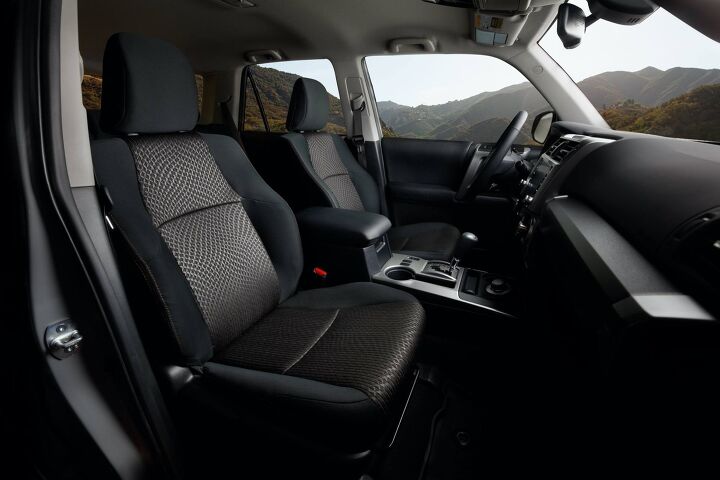





























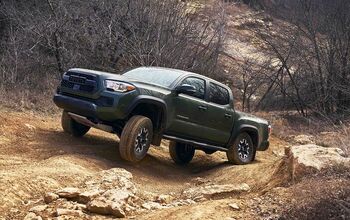
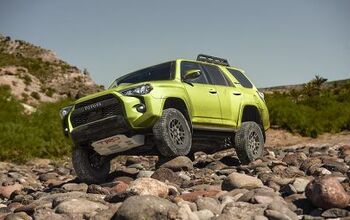
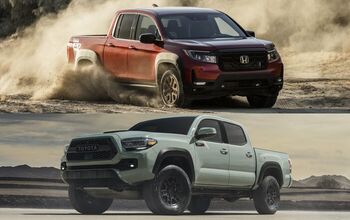
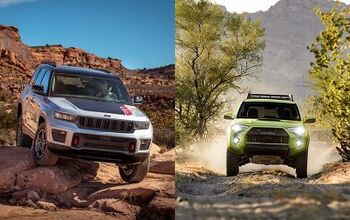
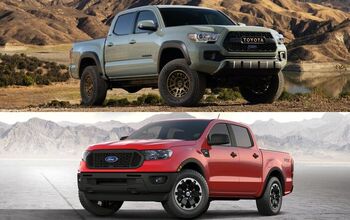
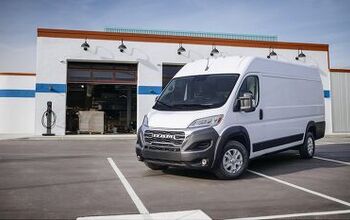

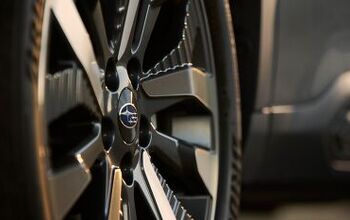
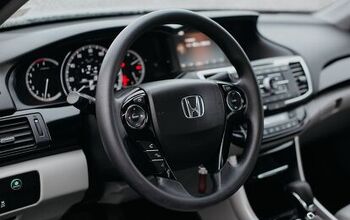
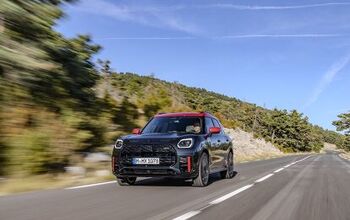




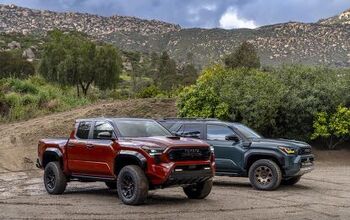
Comments
Join the conversation
I have owned both. Both great vehicles. The 4Runner has better build quality, coming from the Tahara plant in Japan vs the Mexican-built Tacoma. Panel gaps are flawless on every 4Runner I've owned, while my 21 Tacoma TRD Pro has uneven gaps on each side of the tailgate and the passenger side of the hood is lower then the fender. 4Runner has a fully boxed frame that will last longer than the Tacoma C-frame is salt-treated areas.
Looking to buy new 2024 Tacoma automatic four wheel drive limited edition loaded.with twin turbo V-6 raptor foot rails leather seats two tone.bigger wheels. 8 screen with technology. Back up camera,hard bed cover locking. 5 of six ft bed doesnt matter.crew cab.want added insurance incase of illness. Payoff incase of death added.darkest tinted windows possible allowed by law.auto start.highest towing capacity.sun roof . Kick ass grill and trim.fog lights.auto defrost mirrors heated steering wheel.best tires available.